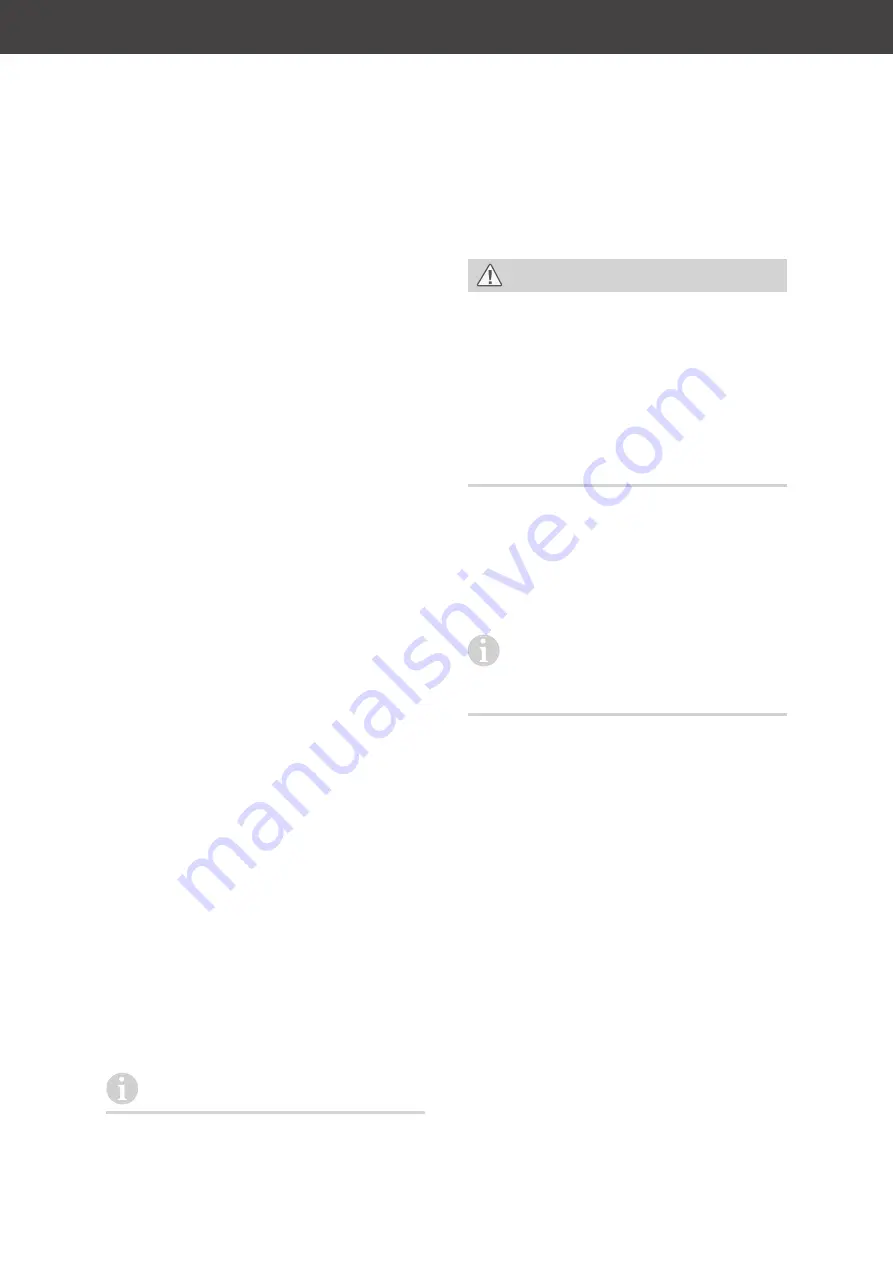
Freezing food, storing frozen food
Page EN-20
Storing frozen food
The deep-freeze chain must not be broken
between the manufacturer and your freezer.
The temperature of the frozen food must al-
ways be at least –18 °C.
• Therefore, do not buy any goods that
– are in frosty, over-icy chests.
– are stacked above the stipulated high-
load marker.
– partially clumped (particularly easy to
identify with berries and vegetables).
– have snow and juice traces.
• Transport frozen foods in special styro-
foam boxes or insulated bags.
• Observe the storage conditions and times
on the packaging.
Defrosting food
• Observe the following basic rules when
defrosting food:
– To defrost food, remove it from the
freezer and let it defrost at room tem-
perature or in the refrigerator.
– Always defrost meat, poultry and fish
in the refrigerator. Make sure that the
frozen food is not immersed in its own
thawing liquid.
– To defrost food quickly, use the de-
frost function on your microwave, for
example. Observe the manufacturer’s
instructions and note that bacteria and
germs can form in this way.
– If you only want to defrost part of a
pack, remove the portion you need
and immediately close the rest of the
pack. In this way, you will avoid “freez-
er burn” and will reduce ice formation
on the remaining foods.
Cook or use thawed foods as soon as
possible. Dispose of the defrosting liquid.
Preparing ice cubes
CAUTION
Health hazard!
Eating ice cubes which have been pre-
pared using impure or standing water
can damage health. Incorrect handling
can lead to risks of causing food poison-
ing.
■
Use only potable water to make ice
cubes.
• Fill the supplied ice cube container to
the ¾ level with fresh drinking water and
place it horizontally in one of the freezer
drawers.
The ice cubes are best removed by
bending the ice cube container slightly
or holding it under running water for a short
while.
Summary of Contents for HKGKB20060DNFI
Page 68: ......















































